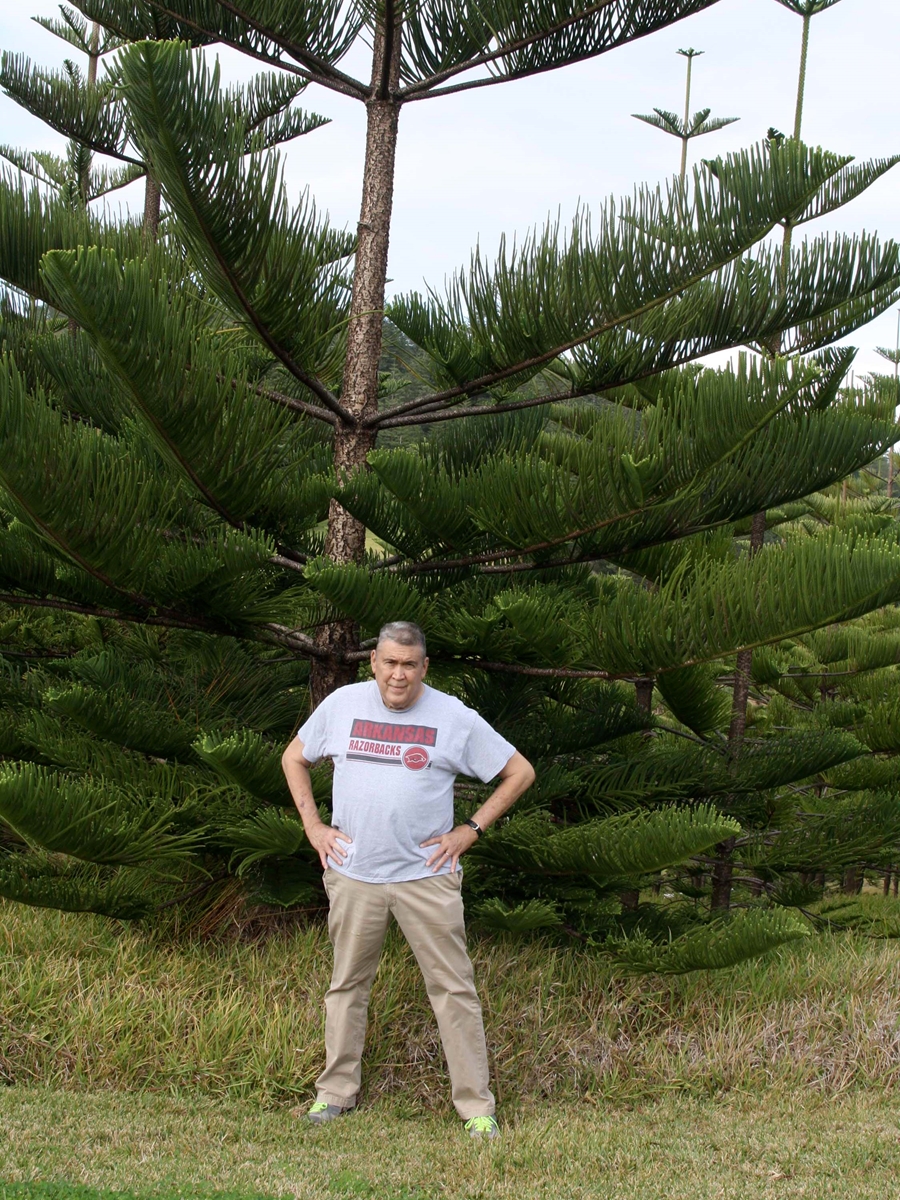Biologist Searches Remote South Pacific Island for Slime Molds
Norfolk Island is an isolated island in the South Pacific located between New Zealand and Australia. The island is quite small, with a total area of only about 14 square miles. Norfolk Island is known for two things. First, it is the native habitat for a tree known as the Norfolk Island pine, which is widely planted throughout subtropical and tropical areas of the world. Second, the descendants of the Tahitians and the mutineers from the HMS Bounty (from the famous incident referred to as "mutiny on the Bounty") were resettled on Norfolk Island from Pitcairn Island in 1856.
The first known inhabitants of Norfolk Island were Polynesians, but they were not present when Captain James Cook "discovered" the island in 1774. Great Britain first settled Norfolk Island a few years later in 1788. The island served as a convict penal settlement during much of the period between 1788 and the middle of the 19th century. At the present time, the population of the island is approximately 1,700, and the largest town is named Burnt Pine.
Steve Stephenson, a research professor in the Department of Biological Sciences, and his wife Barbara, an instructor in the Department of Mathematical Sciences, spent two weeks on Norfolk Island in June. The purpose of their visit was to survey for myxomycetes (commonly referred to as slime molds). No previous survey for this group of fungus-like organisms had been carried out on the island.
Stephenson has been interested in long-distance dispersal and the biogeography of myxomycetes on isolated islands, and previous expeditions have taken him to Macquarie Island in the Southern Ocean, Ascension Island in the Atlantic Ocean, and Christmas Island in the Indian Ocean.
Stephenson's studies of myxomycetes over the past 40 years have taken him to all seven continents, and he has collected these organisms in every major type of terrestrial ecosystem. He is the author or coauthor of thirteen books and more than 400 book chapters and papers published in scientific journals. Many of these deal with the distribution, ecology and biology of myxomycetes.
Topics
Contacts
Steven Lee Stephenson, visiting professor
Department of Biological Sciences
479-575-2869,
slsteph@uark.edu
Bob Whitby, feature writer
University Relations
479-575-4737,
whitby@uark.edu
Headlines
Native American Student Association to Host Annual Choctaw Stickball Tournament
Competition begins at 10 a.m. Saturday the the University Recreation fields on Razorback Road. Carly Keats, a star Razorback basketball player, will play for her home team from Choctaw, Mississippi.
Department of Music Professor to Teach at Italian Festival in June
Richard Rulli, associate professor of trumpet in the Department of Music, has been invited to teach at TrumpetFest June 16-23 in Orvieto, Italy.
Bumpers College Names Senior Scholars, Outstanding Departmental Students
Twenty-five students from 10 different majors and concentrations in Bumpers College were named Senior Scholars for 2023-24, and each department has named its outstanding students for the year.
Music Education Students Bring Fun to Child Development Center
Interactive music sessions known as "music zoos" bring creative learning of musical instruments to the children in the center, as well as providing the music education students the chance to practice their teaching skills.
New Faculty Teaching Portfolio Authors Recognized
The faculty members successfully completed the Teaching Portfolio and will be recognized at the Fall Teaching Awards ceremony hosted by the Cordes Teaching and Faculty Support Center and the Teaching Academy.





